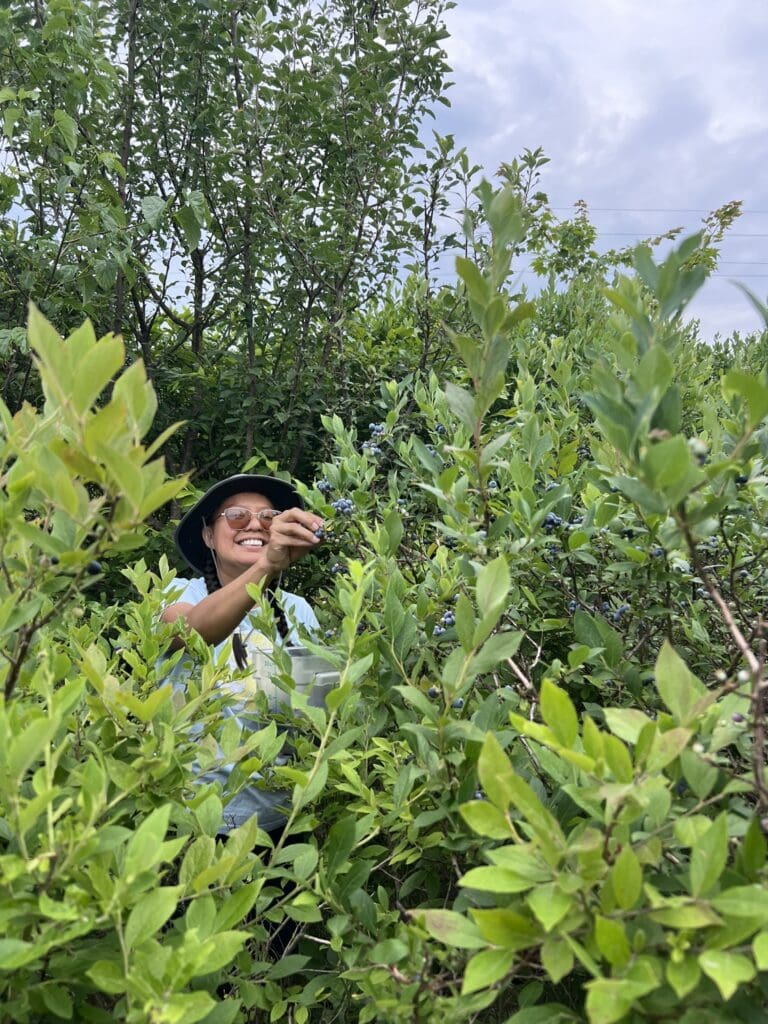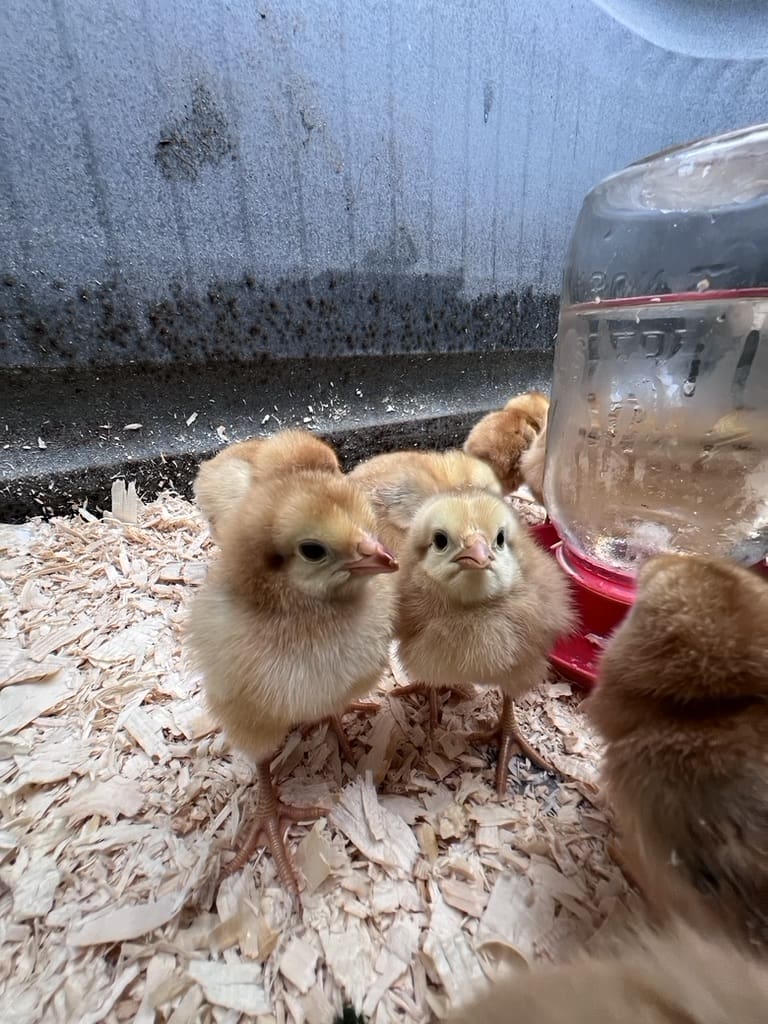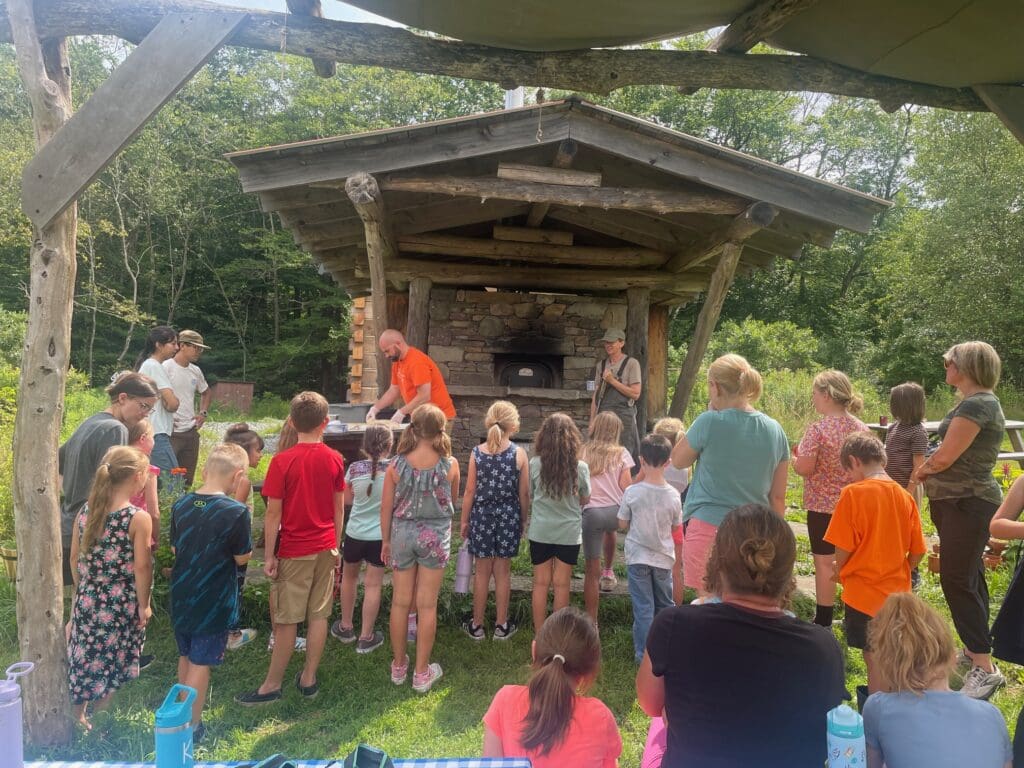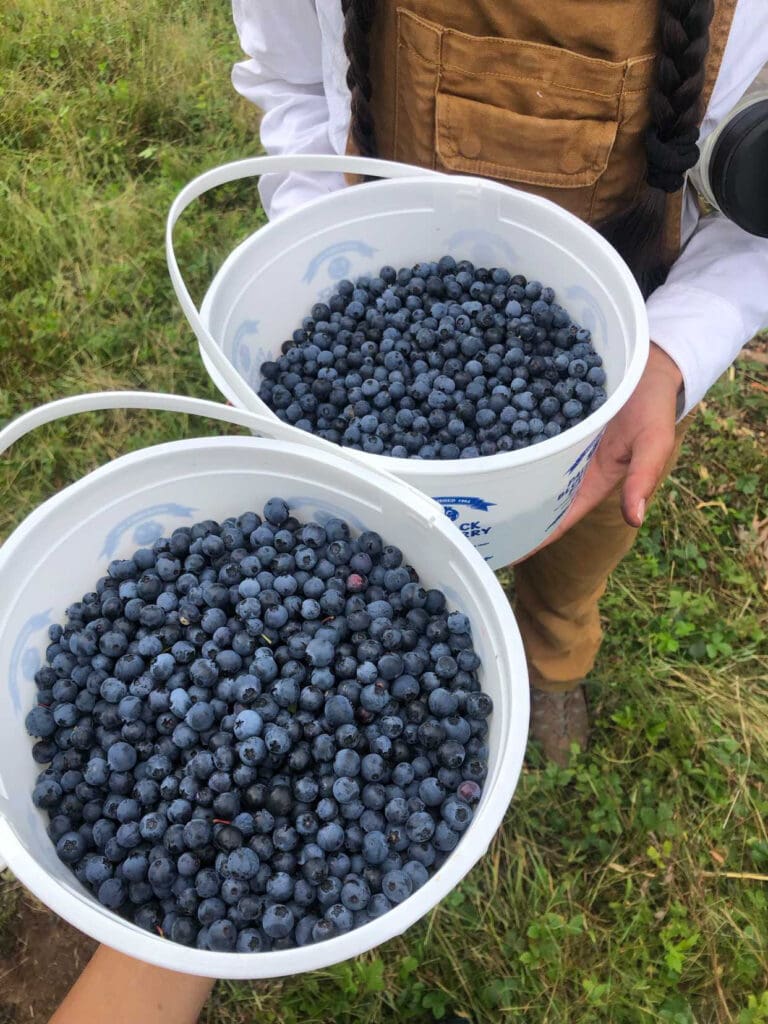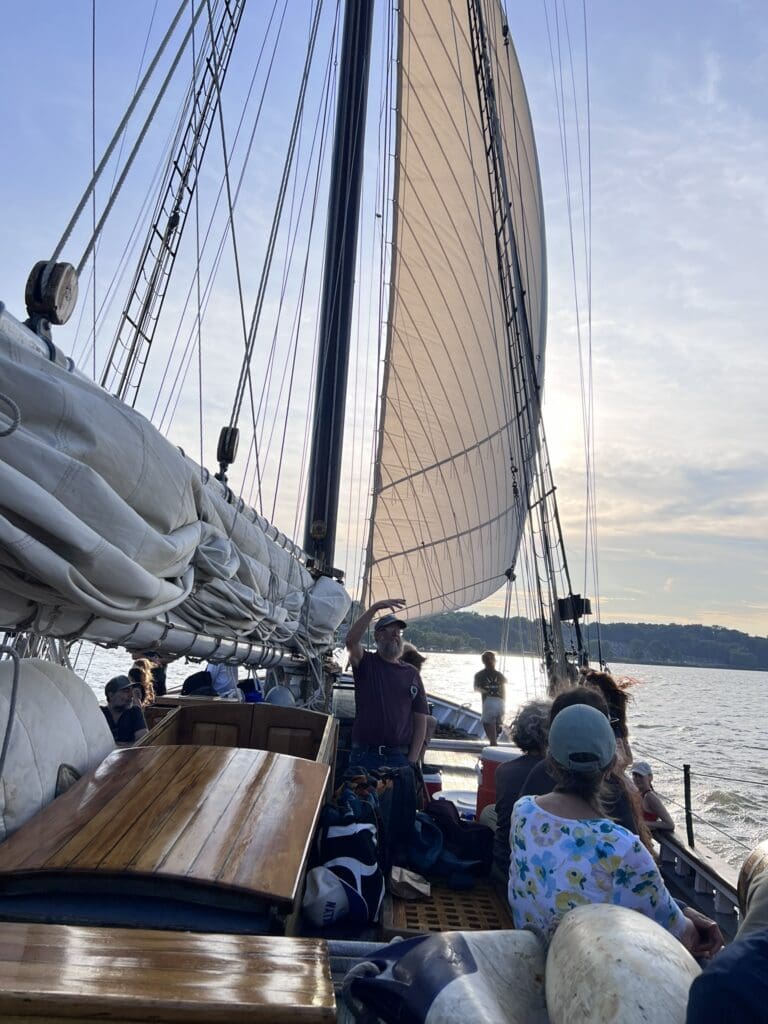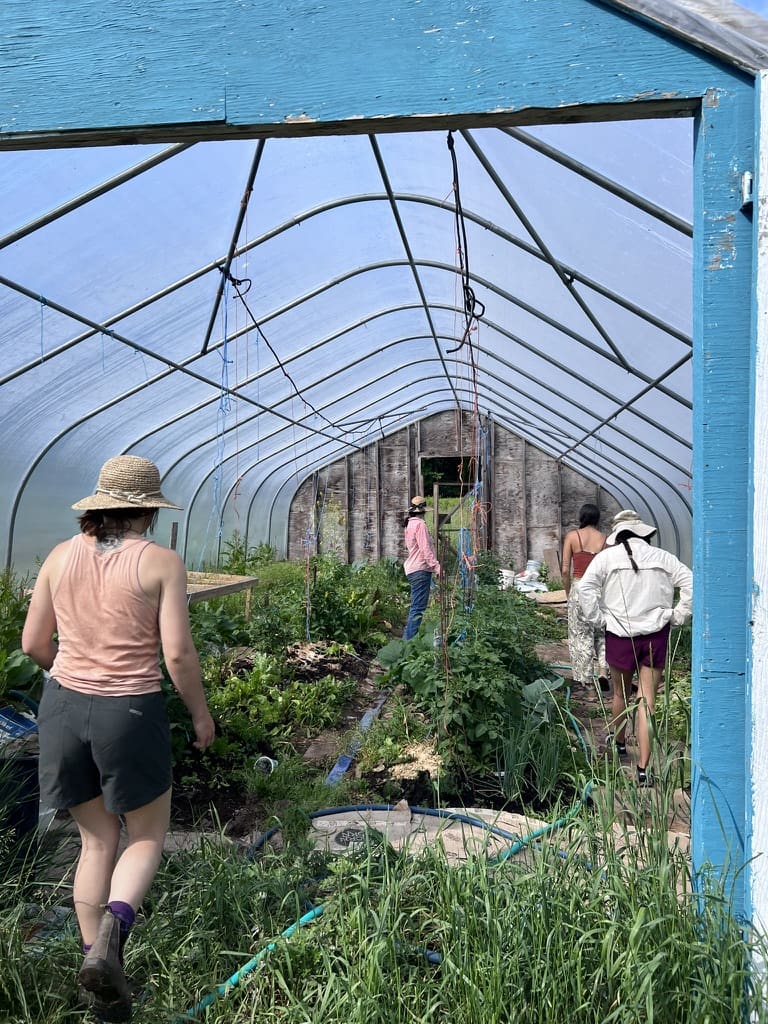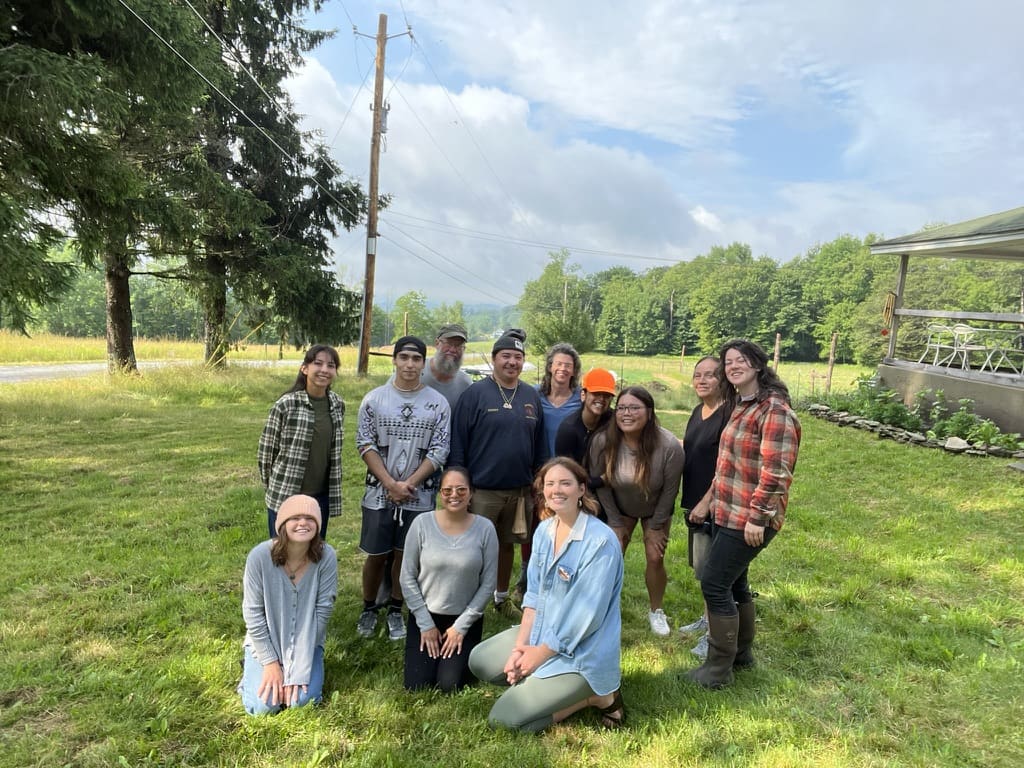Catskills Exchange
By Raeanna Johnson, Raina Silver, Iris Gillingham, and Liv Bigtree.
On June 18, 2024, the Black Mesa to Catskills Exchange Program began with two Diné (Navajo) youth, Raeanna Johnson and Raina Silver, from the Black Mesa region, traveling to the Catskills Mountains region of New York. The rest of the exchange participants, who were waiting in New York, were Iris Gillingham, Riza Pykkonen, and Olivia (Liv) Bigtree. Riza is from Boulder, Colorado, and Liv is Oneida from Onondaga Nation. Gael Roots Community Farm is a farm started by Iris, who grew up down the road and facilitated the exchange crew during their time in New York. The Catskills portion of the Exchange Program was a 5-week program where the Gael Roots Community Farm family hosted participants to learn practices of Catskills farming, foraging, animal husbandry, and horticulture. Raeanna will facilitate the remainder of the exchange program on Black Mesa, where participants will explore Navajo culture, agriculture, ranching, lifeways, and foodways.
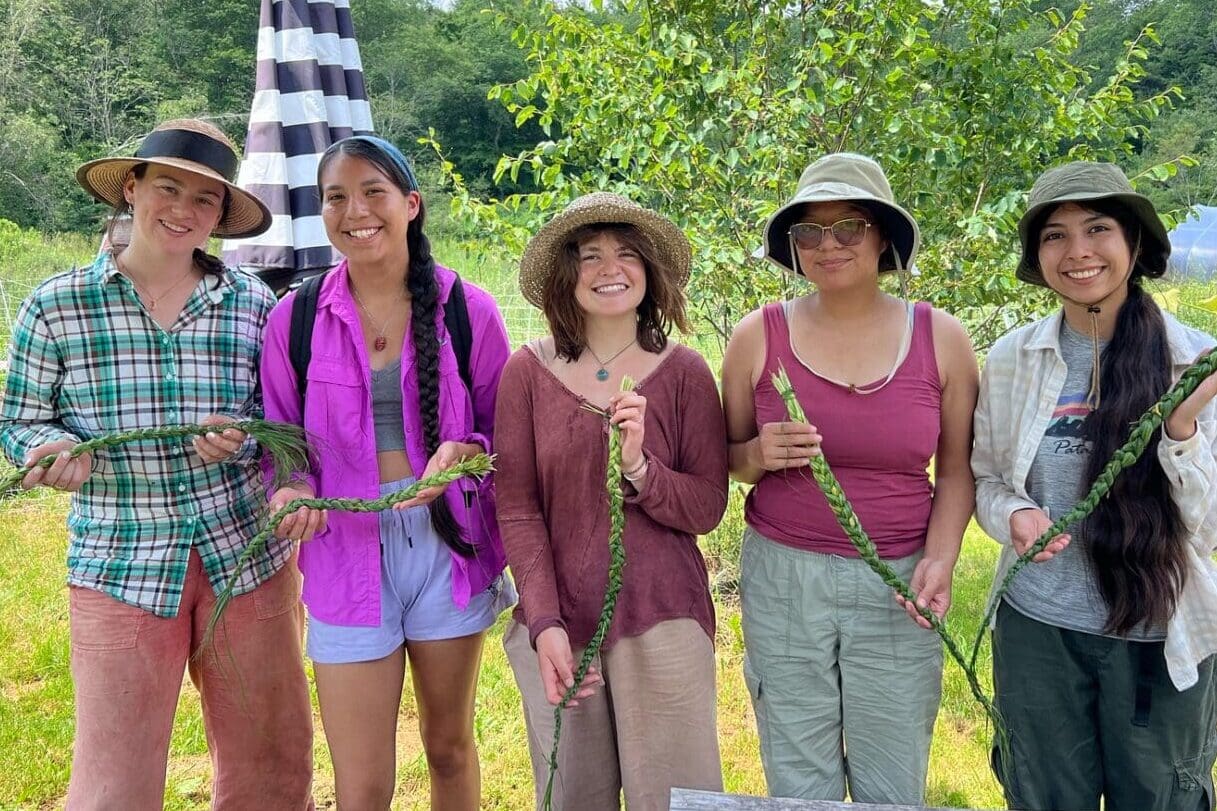
This opportunity strengthens skills for living and working with people across different cultures, backgrounds, and ecosystems. It includes working with wild, cultivated, herbal plants, sheep, cows, horses, wool processing, and fiber arts. This exchange also fostered conversations of commonalities dealing with fossil fuel impacts from home communities. Read more about what led up to this exchange program by reading the Gael Roots Community Farms blog.
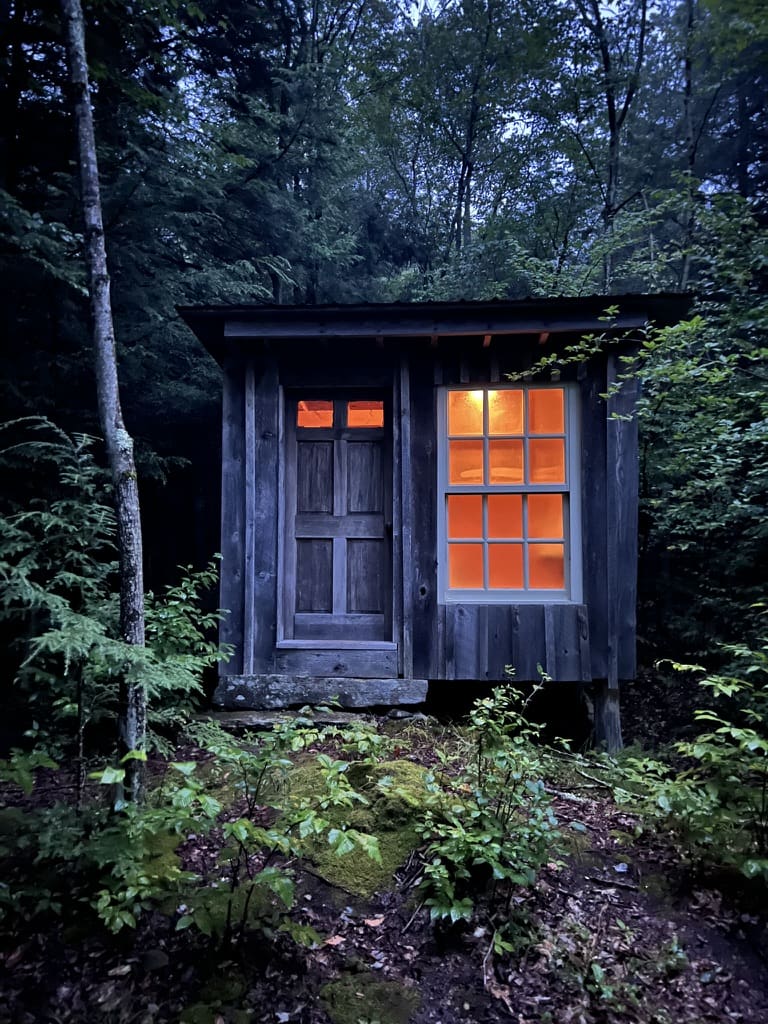
Week one began with getting folks settled into their cabins, gathering for introductions, and oriented around Gael Roots Community Farm and Wild Roots Farm. Wild Roots Farm is an organic CSA (Community Supported Agriculture) and market farm run by the Gael Roots Community Farm family. Participants visited the spring and well on Wild Roots during this time and tasted the clear mountain water. The hand-dug well with clean water was why Iris’s grandmother, Bea, chose the spot now on the farm. During the first week, participants harvested vegetables from the garden and made farm meals in Wild Roots’ outdoor wood-fired bake oven. On June 21st, the program participants were introduced to the medicinal plant St. Johnswort, which harvested small yellow flowers in the morning and made infused oil for salve and tincture. Other farm learning opportunities included moving the Scottish Highlands cows and Icelandic and Shetland sheep to new pastures. The animals are moved rotationally around the fields at Gael Roots throughout the season. The farm used solar electric fences to create the pens, and the exchange crew shared about diverse ways that communities move or herd sheep. During the first week participants learned about plants in the garden, harvested goumi berries, and laid cardboard and hay mulch in the raspberry paths. The program’s first week flew by with lots of great learning and sharing.
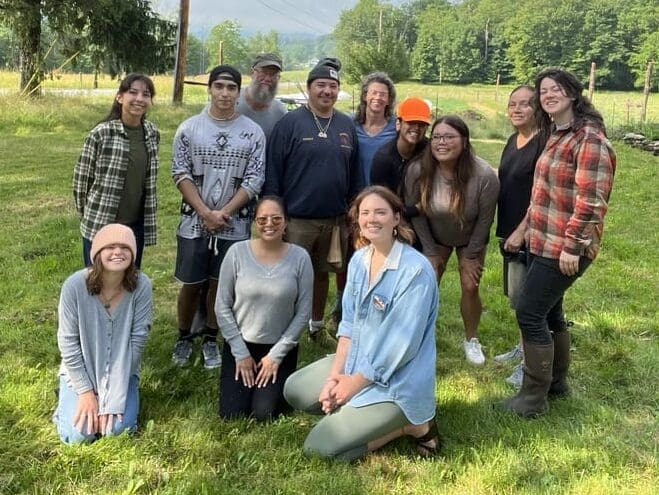
Aside from the regular upkeep and building of the community farm, like fixing the garden fence, clearing the greenhouse beds for new starters, and cleaning the house, the second week of the exchange program was filled with many first acquaintances and connections. First, the exchange crew was privileged to greet Sambucus canadensis, the elderberry tree. This powerful and wise plant is famous for its medicinal properties and treating common illnesses. Later, participants got a call from the post office to pick up a special package. An order of 50 chirpy baby chicks had just arrived from a farm in Pennsylvania! Exchange program participants were introduced the chicks to their new home at Wild Roots Farm. Then, they attended the Catskills Young Farmers Coalition’s Family Dinner during the summer solstice. This ended up being a great opportunity for the exchange crew to meet other farmers from the Catskills and form new allies. To end the week, participants had an incredibly special group visit to the farm for the weekend. The Haudenosaunee Environmental Task Force brought a youth group comprised of 6 Haudenosaunee members, including facilitators Hazel Powless and Sonny White. Collaborations like this highlight what the Black Mesa to Catskills Exchange Program is all about. It creates connections and relations between Indigenous communities and youth nationwide. It can also bring a familiar space and entity to Indigenous folks from Arizona during their stay in New York by remedying symptoms of homesickness and hiraeth.
The third week of the exchange program was a true test of our commitment and adaptability. Amidst the Summer, wildflowers were peaking, and fresh domestic and wild berries were beginning to shower us with abundant fruit. With the baby chicks getting acquainted with their new home, some of us were tasked with reinforcing their roof. This week showcased our role in the exchange program as we prepared to host a Meet and Greet and welcome Elementary children into their first week of summer school at Wild Roots Farms—our respite afternoons that were not just about relaxation but also about learning and inspiration. We had the opportunity to rock out at an Alanis Morrisette concert at the old Woodstock venue of 1969 (a gift from a Gael Roots Board Member), visited Willow Wisp Farm (a community nexus for farming, art, food, and ecology), and sailed on the Clearwater. Clearwater is renowned for its exceptional environmental education programs, which provide people with valuable opportunities to delve into the ecology, history, and environmental issues of the Hudson Valley. The organization’s efforts play a crucial role in nurturing and developing environmental stewards within local communities for generations to come. Raina, one of our participants, used her herbal medicine-making skills from Chestnut School of Herbal Medicine to create delectable treats for the meet and greet. She carefully selected and prepared the herbs, ensuring their freshness and potency. The treats consisted of herbal compound butter with rose petals, cinnamon, maple syrup, a basil compound butter with three different basils, and garlic and onion scapes butter. She also made herbal syrups with wildcrafted and domestic herbs (elderflower, chamomile, peppermint, anise hyssop, and blueberries). And a herbal shrub, a sweet and sour drink enhancer with black currents, raspberries, goumi berries and blueberries infused with apple cider vinegar and medicinal aromatic herbs. This process showcased Raina’s skills and highlighted the importance of sustainable farming and the use of locally sourced ingredients in our culinary practices.
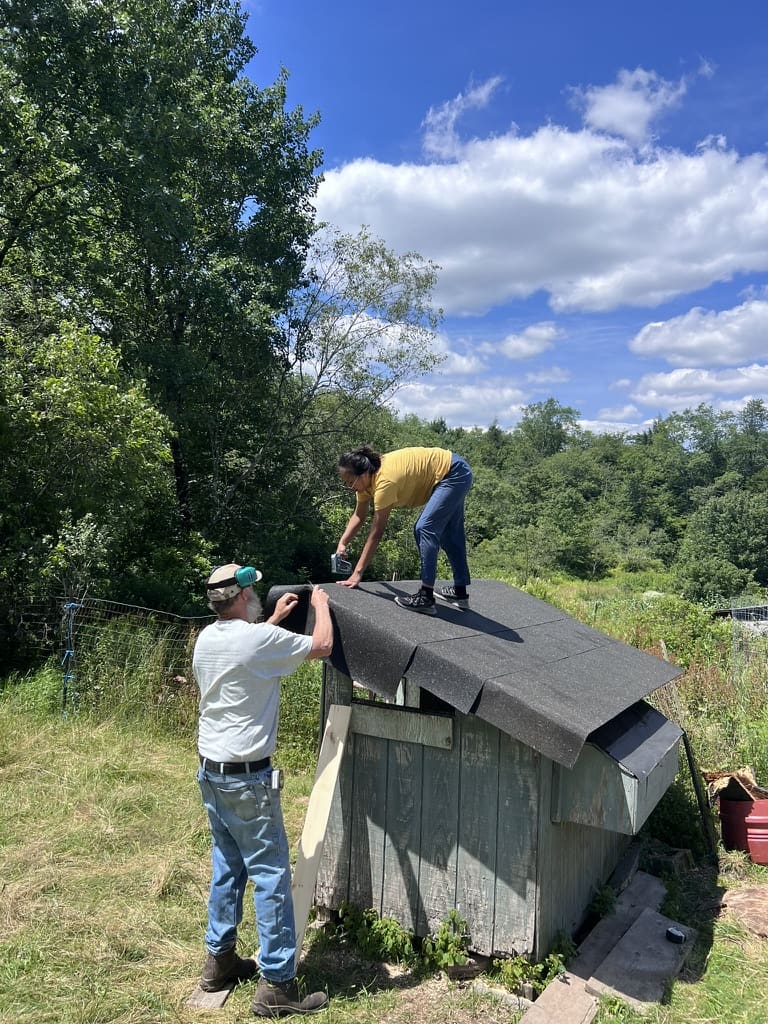
During week three, the exchange program took on all the farm tasks for both Gael Roots Community Farm and Wild Roots, while two of the primary land stewards, Wes and Amy, went away on a trip to Maine. The participants, being four weeks in, joyed at being entrusted while ensuring that both farms’ needs were met. Participants spent their days picking berries, weeding the gardens, caring for animals, harvesting food and medicines, and watering the greenhouse, gardens, plants, and seedlings. While being the primary land stewards, exchange participants picked many berries, including gallon bags of black currants, wild blueberries, and raspberries. They harvested sacred basil, made tincture, and dried the herb. Their week-long adventures included going to the Callicoon Pantry Dance Party, Callicoon farmer’s market, volunteer blueberry picking at Manor Century Farm, and being gifted facials thanks to Susie, a dear friend and supporter of Gael Roots Community Farm. To close out this week, the Livingston Manor Summer School group came where the Kanien’kehá:ka (Mohawk) visitor, Kanenishon (Gael Roots Board President), shared a brief version of the Haudenosaunee Creation Story with the children, teachers, and exchange program.
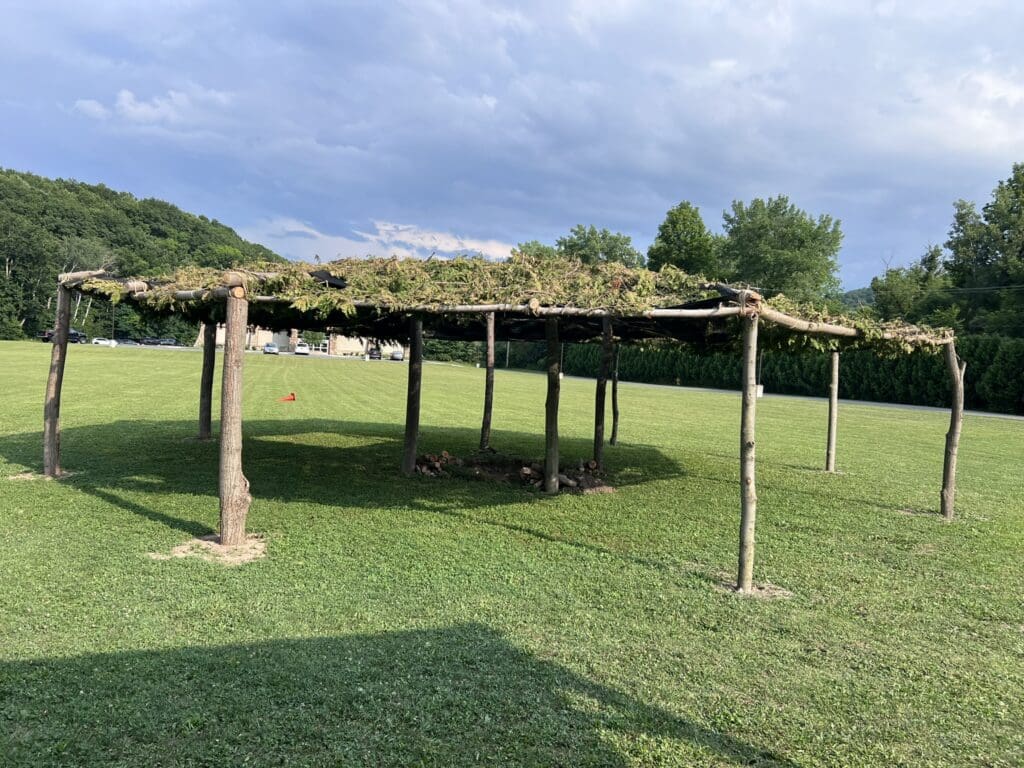
For the final day of the exchange program, the group traveled to Onondaga for a brief visit before departure back to their homes. After dividing up medicines and gifts, participants made their way to the Onondaga Nation, where they met one of the participant’s families. Their first stop was at the Gibson water trough, where the entire Onondaga Nation and local allies love to get their water supply. Liv’s Grandmother, Regina, welcomed the exchange program with Haudenosaunee 1600+-year-old tobacco seeds and leaves. The group traveled to the Onondaga Nation Buffalo Field, where Regina shared stories of the Onondaga Buffalo. The program ended the final day with a meal at Dinosaur Barbecue in Syracuse, NY, accompanied by Liv’s family. Though the exchange program officially closed out, participants Raina and Raeanna had an unexpected delay in their travel home, but they got to have a more in-depth visit to Onondaga. Liv and her family enjoyed welcoming Raina and Raeanna into their home, taking them to Clark’s Reservation State Park, showing them the cedar arbor gathering space, Onondaga Nation Falls, and sharing stories, culture, and language.
The Black Mesa to Catskills Exchange Program participants thanks the Building Equity and Alignment for Environmental Justice (BEA) Fund for making this exchange program possible. For more information on this exchange program, email Raeanna@tonizhoniani.org

